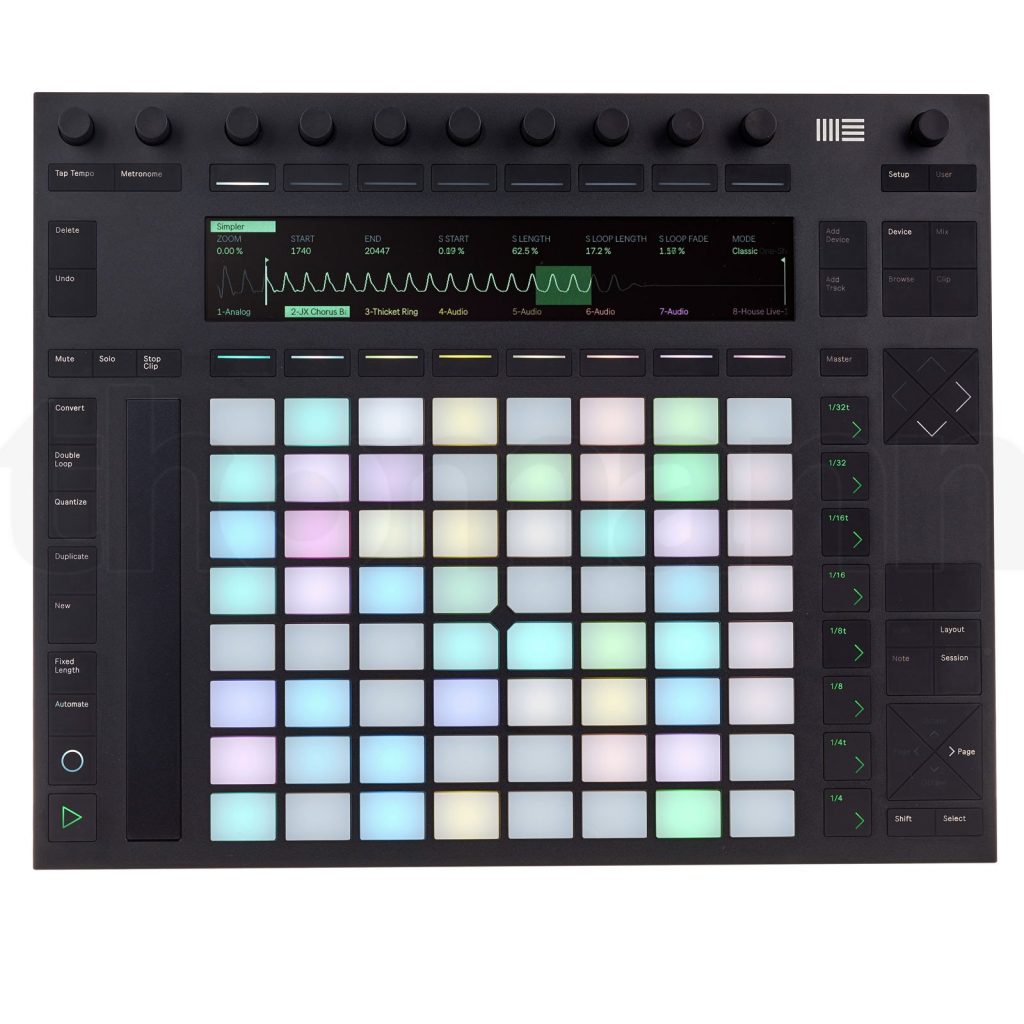
The Ableton Push is a piece of hardware made by Ableton that has a launchpad type setup with pads to press to create melodies, chords and beats easily. I found the Push really easy to set up with my laptop which is great when you want to start making music with it straight away. I think using this will really help both of my tracks as I feel that I can be much more creative with them compared to a laptop because it looks so engaging and interesting. Using one of these will also be a good experience for me as a producer as lots of standard recording and producing setups have one of these, even from big recording studios to home studios. It increases the workflow by a lot, allows the user to be more creative and it means you don’t have to be sat at a laptop all the time to create music anymore.
A lot of the features on the Push like quantize, arpeggiator and even things like record and playback are really handy when wanting to play live and even in recording sessions. Everything you need is right in front of you; you don’t need to mess around with settings to quantize or arpeggiate as the buttons are there and easily accessible. I want to experiment with the different rhythms you can apply in the arpeggiator as I have never used this feature before. having all of these vital options there in front of you also improves the workflow as you don’t need to keep turning to your laptop to do simple things like record and playback.
As well as creating ideas from the pads, it allows you also to automate effects with the encoders at the top and has a pitch bend slider on the left next to the pads. The screen features anything your computer is looking at that moment, so if you have a reverb effect up on your laptop, it will also show on the screen so you can tweak it from the dials. This is helpful when recording and performing live as you can record your automation at the same time as playing the pads; much easier than adding automation manually after you’ve recorded it. I really enjoyed playing around with the different types of parameters and what you can automate with them as it is much more hands-on than using a keyboard and mouse to manipulate sounds. If I ever decided to do an electronic live performance for my college work, I will definitely use the Push for this reason and many more. Here is a video I used to explore automation on the Push:
The Ableton Push also has presets for many different scales which is great for me and reduces the need for a keyboard as I am not a keyboard player! It maps out and removes all the notes that aren’t in the scale so you can play them easily and each key you press will (mostly) always sound right. They have common scales like major, minor, pentatonic and blues but also more unique and unconventional scales like Dorian, Lydian, Mixolydian and Phrygian. I probably won’t be using these until I know more about the scales but I will defiantly experiment with the pentatonic and blues scales for my songs. You can then change the layout of the notes in the key so depending on what you are trying to play, this can make recording a lot easier having it mapped the way you want. This video is great for explaining how to access the scales and the different customizations you can make on them depending on your preferences and style of playing.
ProAs well as the great features already mentioned, the Push also has its own sampling feature, taking from the simpler in Ableton’s software. I have used the simpler mode before on Ableton but never on the push so it should be really interesting to see how creative you can get with it compared to a laptop. Adding chopped up samples from drum beats or melodies into the sequencer would really help in live performance environments where everything is recorded and played back straight away. Using the encoders, you can zoom in and out of the sample to chop up very specific parts and then add them to the drum rack or into the sequencer. As well as using it to chop up samples, the looper mode allows you to play specific loops of the sample; this will be very helpful in my music as I am using a lot of loops for my percussion elements like shakers. This video explains how sampling can be achieved on the Push: